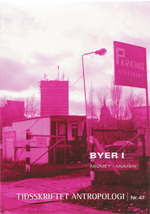KØBENHAVN
DOI:
https://doi.org/10.7146/ta.v0i47.107114Abstract
Copenhagen is the capital of Denmark and
the Kingdom’s only metropolis. The city
embraces institutions of royalty, state and
national culture as well as all the ‘people’
of Denmark. Whereas national institutions
are by and large located within the walls
of the fortress city, the ‘people’ are generally
located in neighborhoods constructed
during rapid industrialization. The article
explores the idea of Copenhagen as a folkelig
city, a city that accrues both legitimacy
and authenticity by invoking the
‘people’ in all their social, regional and
ethnic diversity in certain areas of the city.
Although a down-to-earth, non-elite, folkelig
community is commonly thought to
derive from the daily lives of ‘common
people’ in lower class neighborhoods, the
article illustrates how the idea of folkelig
community is intentionally evoked in
efforts to revitalize such very neighborhoods
deemed lacking a proper sense of
community. The article discusses how two
voluntary organizations run by middle
class reformers invoke different aesthetics
of diversity and authentic commonality in
attempts to infuse a working class neighborhood
undergoing urban renewal with
a new sense of folkelig community. With
each their own facility for voluntary sport
and culture, both aspire to create venues
promoting a common sociality that cross
cuts social difference. While the locally
based organization invokes a plural community
of locals, the nationally based
organization invokes a plural community
of citizens. The article concludes that the
aesthetic of common diversity and the performance
of folkelig community are vital
to the ideal of the good city upheld by
Copenhagen’s mentors, organizers and
authorities.
Downloads
Published
How to Cite
Issue
Section
License
Ophavsretten til artiklerne i Tidsskriftet Antropologi tilfalder forfatteren.
Artikler publiceret i Tidsskriftet Antropologi må citeres, downloades og videresendes for ikke-kommerciel brug, under forudsætning af normal akademisk reference til forfatter(e) samt tidsskrift, årgang, nummer og sider. Artiklerne må kun genudgives med eksplicit tilladelse fra forfatter(e) og tidsskriftet.


